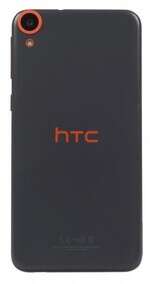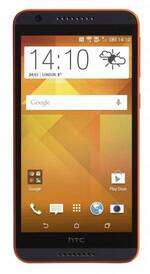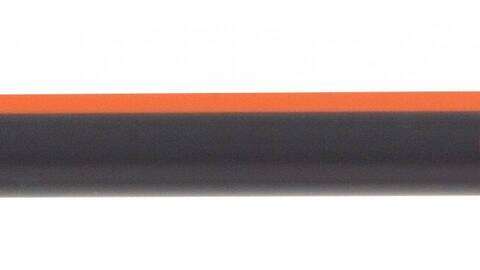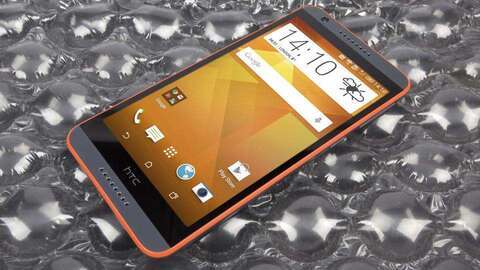HTC Desire 820 review
Few phablets have ever come close to matching the speed, gorgeous screen or massive battery life of Samsung's Galaxy Note 4 , but you'll have to pay a small fortune to own one. Big screen phones at the budget end of the market have struggled to make an impact, but HTC's Desire range continues to buck that trend. The latest, the Desire 820, is one of the best yet.
The Desire 820 takes several design cues from the Desire Eye , with a gorgeous dual-colour unibody design. There's not a single break in the chassis, despite the multiple colour highlights, as HTC has injected the secondary colour directly into the phone's soft touch surround - allowing for a near seamless finish around the entire handset. It feels incredibly well-made as a result, and we particularly like the grey and orange colour scheme of our review sample.

The bezels are rather chunky, giving the phone dimensions of 158x79mm – overly large for a 5.5in handset. Its svelte 7.7mm thickness makes it feel comfortable in the hand though. The soft touch rear and rounded corners can be a little slippery at times, particularly if you're only using one hand, but on the whole we found it very easy to use.
DISPLAY
The Desire 820's 5.5in display is hardly the sharpest we've seen with its lowly 1,280x720 resolution, but a pixel density of 267 pixels-per-inch means text is still perfectly legible and app icons are largely free of noticeably jagged edges. You can still see a couple if you peer in close, but at a normal viewing distance we had no complaints.

Picture quality was decent, too, and the screen's colour accuracy reading was actually better than HTC's flagship One M9 handset. Whereas our colour calibrator only measured 87.1% of the sRGB colour gamut on the One M9, the Desire 820 was showing 90.8%, leading to slightly more authentic, realistic colours. The Desire 820's main weakness was its red coverage, but the rest of the primary colours were evenly spread across the gamut, producing balanced, natural-looking images.
The high 440.69cd/m2 brightness produced lovely clear whites and made it easier to use outside. Unfortunately, this made blacks appear quite grey, measuring at 0.41cd/m2, but fortunately this didn't have much of a negative effect on contrast levels. At 1,060:1, images still had plenty of detail and the screen rarely darkened when we weren't looking at it face on.
PERFORMANCE
The Desire 820 is powered by a 64-bit octa-core 1.7GHz Qualcomm Snapdragon 615 processor and 2GB of RAM, giving it a considerable power boost over last year's equivalent model. This is much more befitting of a mid-range device, and it's particularly important for when the Desire 820 receives its inevitable upgrade to Android 5.0. It only runs Android 4.4 at the moment, but at least it's ready to take full advantage of Google's latest OS once HTC start rolling out OTA updates.

In the meantime, the Desire 820 packs plenty of raw processing speed. We were particularly impressed with its web browsing capabilities, as its score of 1,492 in BrowserMark isn't that far behind LG's G Flex 2 , which costs twice as much yet only scored 1,532. It also comfortably beats the Huawei P8 's score of 1,108, and it showed when we compared both phones side by side. Whereas the P8 was noticeably jerky when scrolling, the Desire 820 was virtually judder free, providing a much smoother and less frustrating web experience than its more expensive rival.
The Desire 820's processor wasn't quite as fast in our BaseMark OS II benchmarks, but its score of 735 is still perfectly decent for a phone of this price. You needn't worry about its graphics capabilities either, as it handled our BaseMark X 1.1 graphics tests surprisingly well. With an overall score of 10,236, it managed an average of 18.2fps in the Dunes test and 26.1fps in the Hangar test. This isn't quite fast enough to play games at the very highest quality settings, but it's more than adequate to run 3D games relatively smoothly.
Unfortunately, the Desire 820's processor clearly takes its toll on the 2,600mAh battery, as it managed just 9h 18m in our continuous video playback test with the screen set to 170cd/m2. You'll still get a full day's use out of it, but it can't quite match last year's Desire 816 , which had the same sized battery and lasted 10h 49m under the same conditions.
